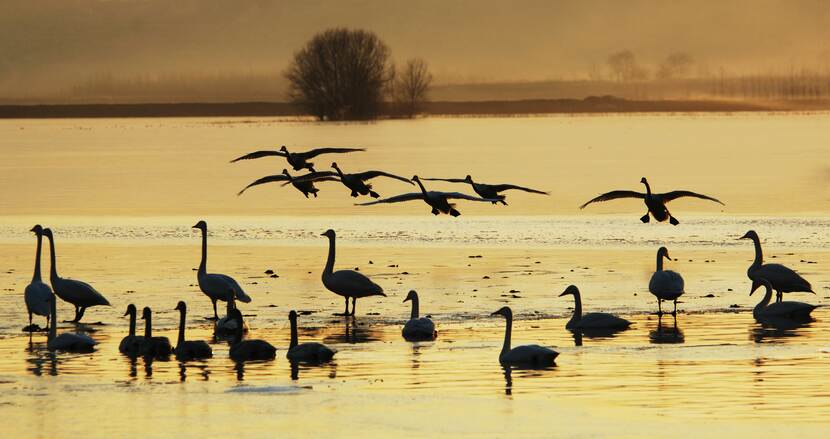China releases updated version of the Red List of Biodiversity
On May 22 2023, the Ministry of Ecology and Environment (MEE) and the Chinese Academy of Sciences (CAS) jointly released the new version of the Red List of Biodiversity in China, realizing a comprehensive assessment and update of the survival status of the existing distribution of higher plants and vertebrates in China, and laying a solid scientific foundation for further strengthening biodiversity conservation. The list assessment covered 39,330 species of higher plants (including subspecies units) and 4767 species of vertebrates. The assessment results show that there are 4088 threatened species of higher plants, accounting for 10.39%, and 1050 threatened species of vertebrates, accounting for 22.02%.

Background
In 2008, the Ministry of Environmental Protection (MEP), in cooperation with the Chinese Academy of Sciences (CAS), initiated work on a comprehensive new edition of the Red List of Chinese flora. The project, China Biodiversity Red List—Higher Plants, was extended to 2013. China assessed the threatened status of all known species of higher plants in China to produce the Red List of China Higher Plants (RLCHP). In September 2013, the RLCHP was officially released. Since its release, the Red List has received attention from the conservation biology community both domestically and internationally. It has become an important scientific basis for China to fulfill international agreements, carry out analysis of biodiversity conservation vacancies and formulate conservation countermeasures.
Results
The new assessment results show that the health condition of China's wild plants has improved, the deterioration of the threatened status of vertebrates has slowed, and the endangered status of some species continues to improve. However, the overall trend of declining biodiversity has not yet been fundamentally reversed.
China has implemented measures to improve biodiversity, such as building a natural reserve system with national parks; implementing the red line system on ecological protection; promoting the project on natural forest protection and restoration, and converting farmland to forests, grasses, and wetland; and working on major ecological protection and restoration projects on mountain, river, forest, lake, and grassland. In addition, strengthened law enforcement and supervision of biodiversity gradually restored the habitats of wild animals and plants in key areas, and the threat level of nearly 500 species of wildlife has been downgraded.
Compared to the previous assessment, the latest assessment shows the following differences:
- The number of species assessed has increased significantly over the past ten years. China has published an average of more than 200 new plant species and more than 50 new vertebrate species each year. Thus, this assessment covers 39,330 species of higher plants, an increase of 4,880 species from the previous one, and 4,767 species of vertebrates, an increase of 410 species from the previous one.
- The species base has been greatly enriched. In this assessment, 595 species of higher plants and 157 species of vertebrates received updated endangerment ratings due to the addition of relevant data.
- The assessment has further clarified the changes in threatened species in China. Compared with the previous assessments, the status of 2,957 threatened species of higher plants remained unchanged. The threat level of 86 species increased due to declining populations, shrinking occupation areas, and reduced discovery sites. The status of 406 species improved due to improved survival status. From these 406 species 265 are now no longer in the threatened species ranking. 18 species formerly suspected of having gone extinct were reassessed due to field surveys and rediscovered. The proportion of threatened gymnosperms, a key endangered group, decreased by 5%. The percentage of threatened vertebrate species decreased by 5%. The threat level of 765 vertebrate species remained unchanged, the level of 54 increased. The threat level of 93 species improved. Out of these 93 species, 43 species are no longer considered threatened species. One species was downgraded from "extinct" to "endangered" due to rediscovery in the field.
Contact
Agriteam China
Email: pek-lnv@minbuza.nl
July 2023